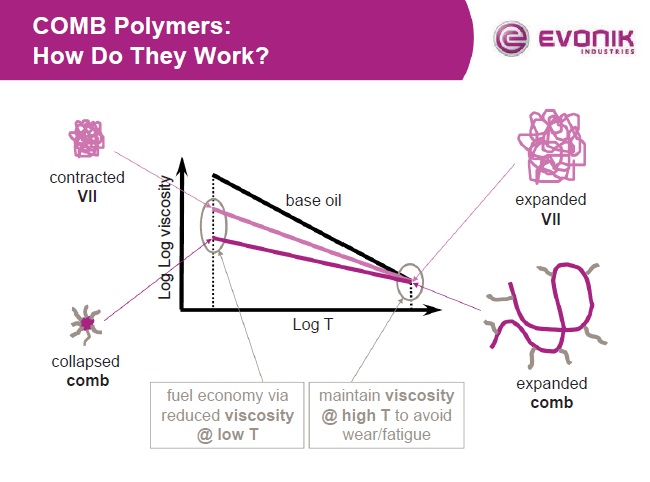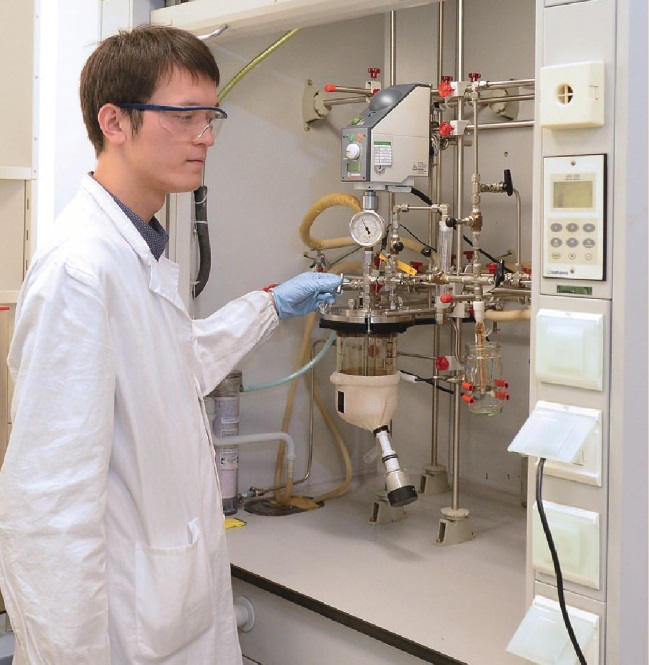20 Minutes With Dr. Jen-Lung Wang
Karl M. Phipps, Managing Editor | TLT 20 Minutes May 2013
Evonik Oil Additives’ global business segment manager for wax modifiers discusses the viscometrics world of oil additives.
JEN-LUNG WANG - The Quick File
Dr. Jen-Lung Wang is business segment manager—wax modifiers for Evonik Oil Additives in Horsham, Pa. (outside of Philadelphia). His primary responsibility is managing the company’s global business and marketing for three major applications of the wax modifiers segment: pour point depressants (PPDs) for lubricants, refinery dewaxing aids (DWAs) and cold-flow improvers (CFIs) for biodiesel.
Previously, Jen-Lung served as global product manager for Evonik’s driveline and industrial gear fluids business segments. In both wax modifiers and driveline segments, Jen-Lung successfully managed several of Evonik’s key development projects and has shared his expertise as both a trainer and speaker at several industry conferences. He also served as technical service manager (2006-2009) for accounts in North America and Asia.
Jen-Lung joined Evonik Oil Additives in 2000 as a senior research scientist. He also worked for Bayer as research group leader and Calgon as a research chemist.
Jen-Lung is a doctoral graduate of The Ohio State University and was a post-doctoral fellow at Carnegie Mellon University in Pittsburgh. He earned his bachelor’s of science degree from the National Taiwan University in Taipei.
Fun Fact: It’s not easy being an Ohio State graduate working in Pennsylvania for Jen-Lung. Fortunately, he was a post-doctoral fellow at Carnegie Mellon University in Pittsburgh. According to Jen-Lung, he still receives a little good-natured ribbing between colleagues at Evonik’s Technology Center in Horsham, Pa., who are Penn State grads, and are willing to accept him as one of their own.
 Jen-Lung Wang
Jen-Lung Wang
TLT: What role do pour point depressants play in lubricant formulation?
Wang: Pour point depressants (PPDs) are a critical component of lubricant formulation. They control the wax crystallization phenomenon at reduced temperature and improve oil low-temperature fluidity, ensuring smooth operation and hardware protection under severe climate conditions. It’s vitally important to select a robust PPD to both sustain and enhance lubricant performance.
Several factors must be taken into account in selecting the appropriate PPD to achieve desirable low temperature flow performance. First, recognize that basestocks, performance packages and viscosity modifiers will influence the low temperature viscosity response in the finished formulation. Additionally, the varying cooling profiles generated by different low-temperature viscosity tests may suggest the presence of several variations of wax crystal morphology. This, in turn, could require additional analysis to determine the optimal PPD selection and treat rate.
Evonik breaks down the complexity of formulating lubricant low temperature properties with an emphasis on assigning the appropriate screening tools and employing accurate prediction models. This approach makes it possible to develop robust PPD products capable of performing in the presence of a wide range of basestocks and component chemistries at optimal treat cost. In some cases, a single PPD can be designed for optimal performance in many different formulations in varying applications.
TLT: What trends do you see developing and what challenges lie ahead for PPDs?
Wang: The industry trend in lubricant low temperature properties is moving toward improving viscosity of in-service oils (aged oils). The inclusion of the aged oil, low temperature viscosity requirement in ILSAC GF-4 and continuing to GF-5 is evidence of this shift. This certainly adds another layer of complexity to PPD selection. Evonik Oil Additives is proud that the ROBO test (ASTM D7528) developed in our lab is recognized by the lubricant industry and is included in ILSAC GF-5 as an alternative test to Sequence IIIGA for generating used oil to evaluate low temperature performance.
Going forward, there are many challenges ahead for oil low temperature performance and PPD technology. These challenges include an expanding selection of basestock types, sources and quality on a global scale, new component chemistries and constantly evolving industry/OEM specifications. With the right technology, I remain confident that we can meet and overcome all of these challenges, just as we have in the past.
 Evonik Oil Additives’ COMB polymer is a category of high-performance viscosity index (VI) designed for fuel-efficient formulations. It provides higher VI lift than traditional polymers at lower treat rates and enables formulators to achieve optimal viscosity temperature relationship and fuel economy.
TLT: What are the megatrends in the lubricant industry and what role do Evonik additives play?
Evonik Oil Additives’ COMB polymer is a category of high-performance viscosity index (VI) designed for fuel-efficient formulations. It provides higher VI lift than traditional polymers at lower treat rates and enables formulators to achieve optimal viscosity temperature relationship and fuel economy.
TLT: What are the megatrends in the lubricant industry and what role do Evonik additives play?
Wang: Right now, the megatrend in the lubricant industry is definitely the pursuit for higher fuel efficiency. For example, there’s a growing awareness of the need for energy efficiency in hydraulic equipment, particularly in construction equipment and other off-highway equipment. With a series of recent field tests validating previous lab and bench tests, Evonik has proven that the use of high viscosity index (VI) hydraulic fluids with good shear stability leads to better fuel economy and higher productivity in hydraulic equipment.
 Developed by Evonik Oil Additives, the ROBO test (ASTM D7528) is recognized by the industry and is included in ILSAC GF-5 as an alternative test to Sequence IIIGA for generating used oil to evaluate low temperature performance. Laboratory technician Jacklee Li monitors the ROBO apparatus at Evonik Oil Additives’ Shanghai lab.
Developed by Evonik Oil Additives, the ROBO test (ASTM D7528) is recognized by the industry and is included in ILSAC GF-5 as an alternative test to Sequence IIIGA for generating used oil to evaluate low temperature performance. Laboratory technician Jacklee Li monitors the ROBO apparatus at Evonik Oil Additives’ Shanghai lab.
Evonik’s view is that polyalkylmethacrylate (PAMA) viscosity index improvers (VII) can provide the required properties. For this reason, we see PAMA-based VI improver as an integral part of modern fluid technology, as well as for new hydraulic technologies like hydraulic hybrids and hydraulic wind turbines.
TLT: Are there other applications in which energy efficiency acts as a driver for innovation?
Wang: Definitely. The trend of reducing automatic transmission fluid (ATF) viscosity is recognized as a lever for OEMs to meet future fuel economy targets by reducing internal frictional losses. The incremental gains become tougher to achieve, as formulators must develop cost-effective transmission lubricants that still retain component compatibility and durability, satisfactory end-user experience and deliver the required fluid service life.
As OEMs look to squeeze every aspect of fuel efficiency out of the lubricant systems, Evonik has solved one part of the formulation-performance puzzle with new COMB polymer technology. COMB polymer is a category of high-performance viscosity index (VI) improver that is uniquely designed for OEM fuel-efficient ATF formulations. It provides higher VI lift than traditional polymers at lower treat rates and enables formulators to achieve optimal viscosity/temperature relationship and fuel economy. Independent lab chassis- dynamometer studies have demonstrated fuel-efficiency gains from the COMB polymer technology in excess of 1%.
COMB polymers have already started to appear as a critical component in factory-fill ATF. Evonik expects the trend to continue, as traditional polymeric VIIs will struggle to achieve similar performance.
TLT: With a focus on fuel efficiency, engine oil formulations have been moving to lower viscosity. Does that pose a danger to durability?
Wang: The COMB polymer technology used in driveline fluid can also help to provide fuel-efficient performance through low-viscosity fluids without compromising engine durability. Its excellent VI lift enables formulators to meet high temperature/high shear (HTHS) viscosity targets at various temperatures to reach fuel economy performance and to ensure engine durability.
The viscometric flexibility that the COMB polymer technology presents allows us to work most effectively with our customers in meeting OEM requirements concerning viscosity grades and HTHS targets.
You can reach Jen-Lung Wang at jen-lung.wang@evonik.com.